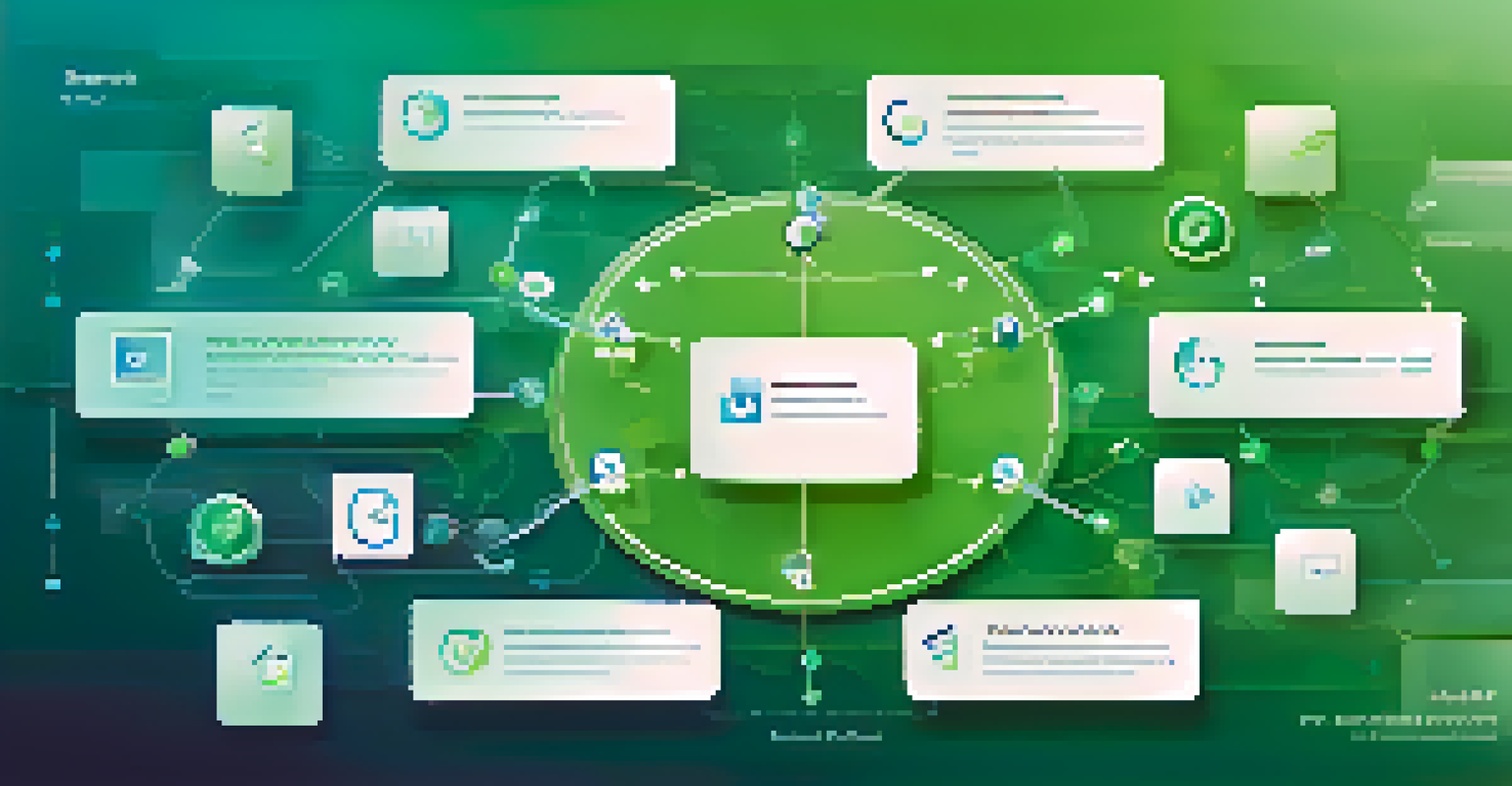The Role of Agile Methodology in Mobile App Development Life

What is Agile Methodology in Mobile App Development?
Agile methodology is a flexible approach to project management, particularly popular in software development. At its core, it emphasizes iterative progress, collaboration, and customer feedback. This methodology allows teams to respond quickly to changes, which is crucial in the fast-paced world of mobile app development.
Agile is about delivering value early and often, and adapting to change as it happens.
In mobile app development, Agile breaks down projects into smaller, manageable units called sprints. Each sprint typically lasts a few weeks, allowing teams to focus on specific features or tasks. This approach not only enhances productivity but also ensures that developers stay aligned with user needs and market trends.
Moreover, Agile fosters a culture of continuous improvement. By reviewing each sprint, teams can identify what worked well and what didn’t, making adjustments for future iterations. This adaptability is key in delivering high-quality mobile applications that meet users' expectations.
Key Principles of Agile Methodology
The Agile Manifesto outlines four fundamental values that guide Agile practices: individuals and interactions over processes and tools, working software over comprehensive documentation, customer collaboration over contract negotiation, and responding to change over following a plan. These principles prioritize human communication and the ability to adapt, which are vital in mobile app development.

One of the standout principles is the focus on customer collaboration. Involving users early and often ensures that the final product aligns closely with their needs. This approach not only increases user satisfaction but also reduces the risk of costly changes later in the development process.
Agile Enhances Flexibility in Apps
Agile methodology allows mobile app development teams to quickly adapt to changing user preferences and market conditions.
Another essential principle is the emphasis on working software. Agile teams deliver functional increments of the app at the end of each sprint, allowing stakeholders to see progress and provide feedback. This transparency builds trust and keeps the project on the right track, ultimately leading to a more successful mobile app.
Benefits of Agile Methodology in Mobile App Development
One of the most significant benefits of Agile methodology is its ability to enhance flexibility. In the rapidly evolving landscape of mobile technology, user preferences and market conditions can shift dramatically. Agile allows teams to pivot quickly, ensuring that the app stays relevant and competitive.
The most effective method of conveying information to and within a development team is face-to-face conversation.
Another advantage is the improvement in team collaboration. Agile promotes a culture of teamwork and open communication, breaking down silos between developers, designers, and stakeholders. This collaborative environment fosters creativity and innovation, leading to better app features and functionality.
Moreover, Agile methodology can lead to faster time-to-market. By breaking the development process into smaller sprints, teams can release functional versions of the app more frequently. This not only allows for early user feedback but also enables businesses to capitalize on market opportunities sooner.
Challenges of Implementing Agile in Mobile App Development
While Agile offers many benefits, it’s not without its challenges. One common issue is the difficulty in managing scope creep, which occurs when new features are continuously added without proper assessment. Agile teams must establish clear boundaries to prevent this from derailing the project.
Another challenge is ensuring that all team members are on board with Agile practices. Transitioning from a traditional waterfall approach to Agile can be daunting for some. It requires a cultural shift and a commitment to ongoing training and support to ensure everyone understands their roles and responsibilities.
Collaboration Boosts App Quality
By prioritizing customer collaboration and team communication, Agile fosters innovation and ensures that the final product aligns with user needs.
Finally, maintaining a consistent pace during sprints can be tricky. Teams may encounter unexpected technical hurdles or changes in project requirements. Agile emphasizes adaptability, but teams also need to balance flexibility with the need to meet deadlines and deliver high-quality results.
The Role of Scrum in Agile Mobile App Development
Scrum is one of the most popular frameworks within the Agile methodology, especially in mobile app development. It provides a structured approach to managing projects through defined roles, events, and artifacts. In Scrum, teams work in short cycles called sprints, focusing on delivering specific features or improvements.
One of the key roles in Scrum is the Scrum Master, who facilitates the process and ensures that the team adheres to Agile principles. This person acts as a coach, helping to remove obstacles and keep the team focused. Having a dedicated Scrum Master can significantly improve the efficiency and effectiveness of mobile app development.
Additionally, Scrum encourages regular feedback through events like sprint reviews and retrospectives. These meetings allow teams to showcase their work and gather input from stakeholders, fostering a collaborative atmosphere that enhances the development process. This continuous feedback loop is vital for refining the app and ensuring it meets user expectations.
Agile Tools and Technologies for Mobile App Development
To effectively implement Agile methodology, teams often rely on various tools and technologies. Project management tools like Jira and Trello help teams organize tasks, track progress, and manage workflows. These platforms facilitate transparency and communication among team members, making it easier to stay aligned throughout the development process.
Additionally, version control systems such as Git play a crucial role in Agile development. They allow multiple developers to collaborate on code without conflict, enabling faster iterations and more efficient problem-solving. The ability to track changes and revert to previous versions also enhances code quality.
Scrum Framework Streamlines Processes
Utilizing Scrum within Agile provides structured roles and regular feedback, significantly improving the efficiency of mobile app development.
Furthermore, agile teams often utilize automation tools for continuous integration and delivery. By automating testing and deployment processes, teams can release updates more frequently and with greater confidence. This technological support is essential for maintaining the speed and quality that Agile promises in mobile app development.
Future Trends in Agile Mobile App Development
As technology continues to evolve, so does the Agile methodology in mobile app development. One emerging trend is the increasing use of artificial intelligence (AI) and machine learning to enhance decision-making and predict project outcomes. These technologies can analyze data patterns, helping teams make more informed choices during the development process.
Another trend is the integration of DevOps practices with Agile. This combination aims to improve collaboration between development and operations teams, resulting in faster and more reliable software releases. As organizations seek to streamline their processes, the synergy between Agile and DevOps becomes increasingly important.

Additionally, the rise of remote work has prompted Agile teams to adopt new collaboration tools and techniques. Virtual stand-ups and online sprint retrospectives have become commonplace, allowing teams to maintain their Agile practices regardless of physical location. This adaptability will likely shape the future of Agile mobile app development.